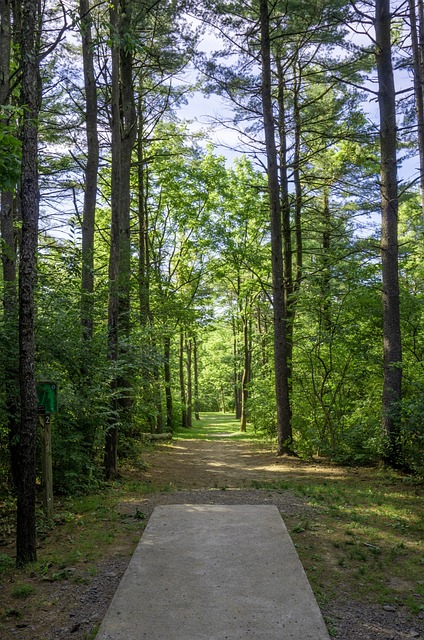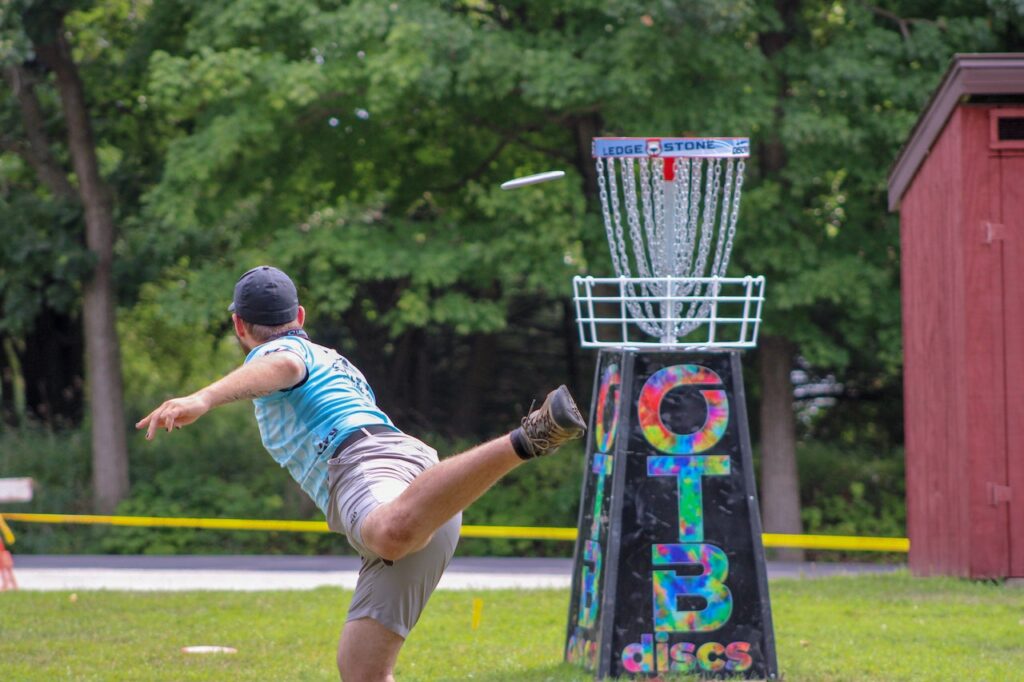Is Disc Golf a sport?
Well, Yes,
Disc golf is a great game that started to gain momentum as a professional sport and is very popular all over the world.
It is a growing and popular activity that involves throwing specially designed discs into a series of targets, usually metal baskets, in as few throws as possible. The objective is similar to traditional golf, but instead of hitting a ball into a hole, players aim to land their discs in the baskets.
Disc golf requires physical skill, strategy, and mental focus. It involves elements of power, accuracy, and control in throwing the discs, as well as decision-making in choosing the right disc for each shot and navigating the course efficiently. Players often walk long distances on courses that are designed to offer various challenges and obstacles, such as trees, hills, and water hazards.
There are organized disc golf competitions and tournaments at both amateur and professional levels, with players competing for titles, rankings, and prizes. The Professional Disc Golf Association (PDGA) is the governing body for professional disc golf, overseeing rules, standards, and tournaments worldwide.
Overall, disc golf meets the criteria of a sport, involving physical exertion, skill, competition, and organized events.
When did disc golf become a sport?
Disc golf has its roots in the early 1900s when people started playing a version of disc golf using tin cans and throwing them into designated targets. However, the formalization of disc golf as a sport began in the 1960s.
The modern version of disc golf, as we know it today, was pioneered by “Steady” Ed Headrick. Headrick is often referred to as the father of disc golf. In the late 1960s, he invented the Frisbee Pole Hole, which was a metal basket with chains that caught the disc. This innovation helped establish the target for the sport.
In 1976, the first disc golf tournament called the “American Flying Disc Open” was held in Rochester, New York. It marked the first officially recognized disc golf tournament and laid the groundwork for the sport’s development.
The Professional Disc Golf Association (PDGA) was formed in 1976, further solidifying disc golf as a sport. The PDGA became the governing body for professional disc golf and established rules, standards, and regulations for the sport.
Since then, disc golf has grown in popularity, with numerous courses built around the world, a dedicated player base, and a professional circuit with competitive tournaments. It has evolved into a recognized and respected sport enjoyed by players of all skill levels.
How big of a sport is disc golf?
Disc golf has experienced significant growth and has become a notable sport over the years. While it may not be as widely recognized or mainstream as traditional sports like football or basketball, its popularity has been steadily increasing, and it has established a dedicated and passionate community of players.
Here are some indicators of the growth and scale of disc golf as a sport:
- Participation: The number of disc golf players has been steadily growing. Many countries have seen an increase in the construction of disc golf courses to meet the demand. The PDGA, the governing body for professional disc golf, has thousands of members worldwide, and there are numerous local and regional disc golf organizations.
- Professional Disc Golf: Disc golf has a professional circuit, with players competing in various tournaments around the world. The PDGA sanctions and organizes many of these events, including major championships. Professional disc golfers have gained recognition, and prize money for top tournaments has increased significantly over the years.
- Media Coverage: Disc golf has been gaining more media coverage, both in traditional outlets and online platforms. Major tournaments are often live-streamed, and there is a growing presence of disc golf-related content on social media and dedicated disc golf websites.
- Disc Manufacturers and Sponsors: The disc manufacturing industry has grown, with numerous companies producing a wide range of discs for different playing styles. Additionally, various sponsors and brands have shown interest in supporting disc golf events and professional players.
- Global Reach: Disc golf is played in numerous countries around the world, and international competitions are becoming more common. There is a growing presence of disc golf in Europe, Asia, and other regions beyond its North American roots.
While the exact scale and impact of disc golf as a sport can vary by region, it is clear that disc golf has gained considerable traction, attracting players, spectators, and support from various stakeholders.
What category of sport is disc golf?
Disc golf is typically categorized as an outdoor precision sport. It falls under the broader category of target sports or target disc sports. Target sports involve throwing or shooting an object at a specific target, aiming for accuracy and precision.
Disc golf specifically involves throwing specially designed discs toward targets (typically metal baskets with chains) with the goal of landing the disc in the target in as few throws as possible. It combines elements of throwing skill, strategy, and decision-making, as players navigate a course and aim to complete it with the lowest score.
While disc golf shares some similarities with traditional golf, such as the objective of reaching targets with as few throws as possible, it is generally classified as a distinct sport due to its unique equipment and gameplay.
It’s worth noting that different organizations and governing bodies may have their own specific categorizations and classifications for disc golf, but it is commonly understood as an outdoor precision sport or target disc sport.
Is disc golf a lifetime sport?
Yes, disc golf can be considered a lifetime sport. What does it mean a lifetime sport?
A lifetime sport is one that can be enjoyed and participated in at any age and throughout a person’s life. Disc golf fits this definition for several reasons:
Accessibility: Disc golf courses are typically designed to accommodate players of all skill levels, from beginners to experienced players. The sport can be adapted to different skill levels and physical abilities, allowing individuals to continue playing and enjoying the game throughout their lives.
Low Impact: Disc golf is a low-impact sport, meaning it puts less strain on the body compared to high-impact activities like running or contact sports. This makes it a suitable option for people of various ages, including older individuals or those who may have physical limitations.
Social and Recreational Aspects: Disc golf can be played casually with friends, family, or in groups, offering a social and recreational aspect. People can gather and enjoy the outdoors while engaging in friendly competition or simply playing for fun. This social component can contribute to the long-term appeal and enjoyment of the sport.
Lifetime Learning and Improvement: Disc golf allows for continuous learning and improvement. Players can work on refining their throwing techniques, learning new disc flight characteristics, and developing strategies over time. This ongoing learning process and the ability to set personal goals can keep individuals engaged and motivated to continue playing.
Community and Culture: Disc golf has developed a strong community and culture with dedicated players and enthusiasts. This sense of community can provide long-term connections, friendships, and a support system that can encourage individuals to stay involved in the sport over the years.
Considering these factors, in our family, we found that disc golf suite all of us, and we enjoy it as our favorite sport, it offers opportunities for physical activity, social engagement with the families that chose this sport as their favorite sport, and it gives an opportunity for personal development for all of us from kids to grown people life.





